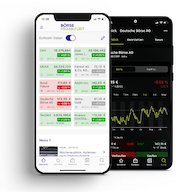“How to deal with currency risk – To hedge or not to hedge?”

The golden days when the strong dollar gave euro investors a boost in returns are over. Those who bet on US stocks in 2025 are facing a double headwind: weak US stock markets and a dollar that is losing ground against the euro. Ali Masarwah, fund analyst and managing director of financial services provider envestor, explains how investors should now deal with currency risk and why the lure of high US interest rates is not a sure thing.
14 July 2025. FRANKFURT (envestor): 2025 brought an unpleasant awakening in investor wonderland: for over a decade, euro investors benefited twice over. Those who bet on the S&P 500 or the MSCI World have been rewarded not only with price gains since the end of the financial crisis, but also with substantial currency gains. The strong dollar acted as a yield booster for equity investors. Fifteen years is a long time, but unfortunately this period does not constitute a law of nature. Over the past six months, the dollar has lost more than 10% against the euro, and US stocks are lagging behind their European counterparts, especially German stocks. The result: a double whammy – the underperformance of US stocks and currency losses go hand in hand in 2025.
Euro investors need to adjust their return expectations to the new reality. Currency gains are not automatic, but often simply a matter of luck. Those who relied on the dollar as a perpetual source of returns have had a rude awakening this year. Nevertheless, investors in US equities should not overreact: currency cycles can last a long time, but currency losses and gains typically average out over the long term. Equity investors should therefore not necessarily use currency hedges – these can cost a lot of money. Instead, they should adjust their return expectations for US equities to the performance of the dollar.
This brings us to another return trap that many investors fall into: US bonds.
US bonds: Interest rate advantage with a catch
Stable interest rates in the US and falling interest rates in the eurozone could lead bond investors to consider the following: Shouldn't they take advantage of attractive US interest rates and hedge the currency risk? While the ECB lowered its key interest rate to two percent in June, US government bonds are attracting investors with yields of well over four percent. But there is a catch.
Hedging against a further weakening of the dollar is not a gift from heaven. It costs money – almost exactly the interest rate differential between the two currency areas. This is due to the mechanism of covered interest rate parity: anyone who hedges dollars against euros gives up US interest rates and receives the lower euro interest rates instead. The supposed yield arbitrage is neutralized by the forward rate. This has to be the case, because without these costs, everyone could profit from the higher US interest rates without any risk – a (theoretical) free ride would lead to serious market distortions.
A practical calculation example: The dollar tranche of a US bond fund recently achieved a gain of 6.6 percent over the past twelve months. The tranche of the identical fund with currency hedging only achieved a gain of 4.5 percent. The difference corresponds almost exactly to the costs of hedging – and thus to the interest rate differential between the dollar and the euro.
Why dollar bonds can still be worthwhile
Nevertheless, there are arguments in favor of investing in hedged foreign currency bonds—even if the interest rate differential is largely offset by hedging. Many US corporate bonds offer a positive (albeit more modest) yield premium compared to comparable euro investments. Secondly, diversification across different currency areas and economic cycles ensures stability in the portfolio. Especially in times of moderate growth in the eurozone, bonds from the US, Canada, or Australia can contribute to risk diversification. This could even apply to Swiss bonds: although interest rates there are once again at zero percent, euro investors can hedge the currency risk and make a profit that relativizes the interest rate differential – good news for fans of Swiss stability – and aren't we all?
Investors also have the option of dealing with currency risk flexibly. Those who have a clear opinion on the direction of foreign currencies can leave part of their exposure unhedged – but should be aware of the risks. It is not without reason that the road of hopeful currency funds is lined with the ruins of many failed strategies. When in doubt, most investors' motto is: play it safe with bonds and hedge currency risk, even if this means losing some of the interest rate advantage.
Conclusion: There is no free lunch on the capital markets
The years of dollar strength between 2009 and 2024 were a stroke of luck – but not a law of nature. Anyone who made currency gains during this period was simply lucky. And anyone who accepts the new reality of dollar weakness must also factor the costs of currency hedging into their calculations. In the end, the old stock market adage remains true: there are no free lunches on the capital markets – especially when it comes to currency risks.
By Ali Masarwah, 14 July 2025, © envestor.de
About the Author
Ali Masarwah is a fund analyst and managing director of envestor.de, one of the few fund platforms that pays cashback on fund distribution fees. Masarwah has been analyzing markets, funds, and ETFs for over 20 years, most recently as an analyst at the research firm Morningstar. His expertise is also valued by numerous financial media outlets in German-speaking countries.
This article reflects the opinion of the author, not that of the editorial team at boerse-frankfurt.de. Its content is the sole responsibility of the author.

More articles from this columnist
| Time | Title |
|---|




